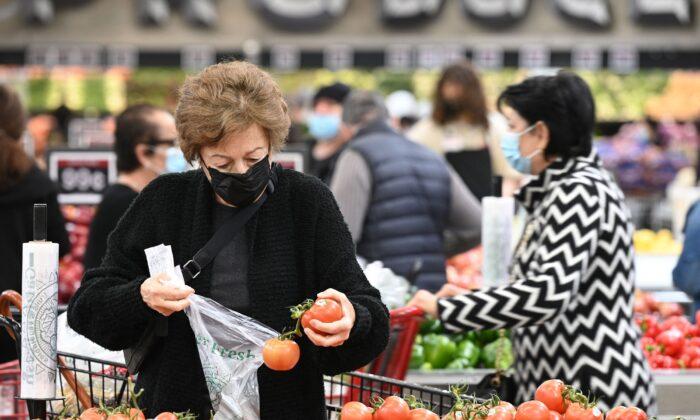From December 2020 to December 2021, overall prices for consumers went up 7 percent, as reflected in the last month’s Consumer Price Index report. The last time the index rose by that much occurred in 1982. The surge marks another milestone for inflation, a growing concern for policymakers and consumers as companies face supply chain issues amid an increase in demand and government stimulus money.
Amid the 7 percent gain during the previous 12 months, a month-to-month look reveals a slight downward shift. Between November and December 2021, monthly inflation declined from 0.8 percent to 0.5 percent. The year ahead, however, could see a continuation of higher levels of inflation, with some sectors seeing increases in prices at a steeper rate than others.
Inflation in the Grocery Aisles
Five of the six major grocery store food group indexes rose in December 2021. Beef prices were up by 14.8 percent compared to the same time the previous year. Roasts increased by 22.1 percent during that same period, while pork went up 15.1 percent and bacon rose by 16.3 percent. On a month-to-month basis, the overall index for meats, poultry, fish, and eggs declined by 0.4 percent from November to December 2021.The increase comes from various factors, including “increased import duties and growing import and export restrictions,” Adam Garcia, the founder of investment information website The Stock Dork, told The Epoch Times. Farmers have pointed to the rising costs of inputs ranging from fuel to fertilizer, along with wage increases, as contributing factors to higher prices. As producers make new contracts that reflect higher prices for input costs, increasing sticker tags at the supermarket “will likely persist into 2022,” Garcia added.
Rising Prices at the Gas Pump
Uncertainty surrounding the pandemic raises questions about global energy consumption in 2022, according to the U.S. Energy Information Administration (EIA). After U.S. real GDP decreased by 3.5 percent from 2019 to 2020, the EIA estimates an increase of 5.7 percent for 2021, followed by an increase of 4.3 percent in 2022.Regular gasoline prices in the United States averaged $3.02 per gallon in 2021, up from an average of $2.18 in 2020. The EIA forecasts gas prices to average $3.06 per gallon in 2022.
Analysts at GasBuddy predict substantial increases in the next four to six weeks, with places such as Los Angeles potentially hitting $4.67 per gallon and Atlanta hitting $3.13 per gallon. Most major U.S. cities could see prices peak around $4 per gallon or slightly below, according to GasBuddy’s 2022 Fuel Price Outlook. Some California cities could see prices top $5 per gallon.
GasBuddy predicts the U.S. gasoline bill for the full year of 2022 will hit nearly $485 billion, up by almost $80 billion from 2021, with the average household spending $2,341 on gas.
Vehicle Prices for New and Used Cars
The index for used cars and trucks rose by 37.3 percent from December 2020 to December 2021. The industry has pointed to supply chain struggles, including a reduced supply of chips and labor shortages, as reasons behind the high prices.Consumer demand remains high for cars, per analysis from Edmunds, which predicts 15.2 million new cars will be sold in 2022. The figure would note an increase of 1.2 percent above the estimated number of new vehicles sold in 2021. Edmunds also recorded a drop in leasing during 2021 and forecasts a continued downward trend for leasing in 2022.
Meanwhile, consumers are paying record amounts for new vehicles. The average transaction price for a new vehicle hit $45,872 in November 2021, compared to $39,984 in November 2020.
Appliances Remain High
The index for the cost of many major appliances increased by 8.4 percent in December 2021 from the year-earlier period. Laundry equipment went up 12.1 percent.“Those are the largest upticks outside of beef and pork prices, and transportation and energy-related expenses,” Elyse Moody, kitchen design expert at Designer Appliances, an independent appliance retailer with two locations in New Jersey, told The Epoch Times. “It’s a very touchy time to replace a broken dishwasher or refrigerator.”
As 2022 unfolds, “we expect price increases for all major appliances to continue,” she said. “The supply chain is still very volatile, supply is still low, and demand is still high.”
Rent on the Rise
“During the winter months, we generally see rent price increases to be milder, but prices are remaining high due to a large demand for apartments and limited supply, especially in highly popular areas,” Brian Carberry, senior managing editor for Apartment Guide and Rent.com, told The Epoch Times.However, when looking at national prices over the past few months, average costs have stayed relatively flat, Carberry noted.
Spring and summer could see month-to-month rates tick upward.
“The rate of increase might not be as severe as in 2021, though, due to the skyrocketing prices we saw beginning last summer,” Carberry said.





